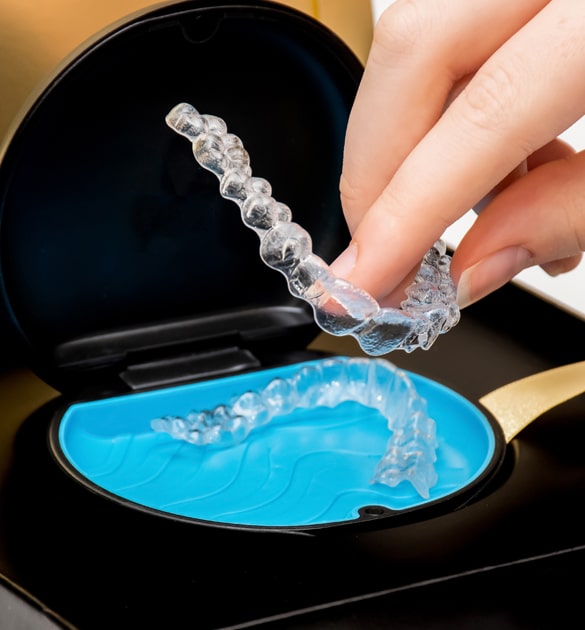
Invisalign has become a popular choice for children who need orthodontic treatment but want to avoid the visibility and discomfort of metal braces. While this clear aligner system offers many benefits, it’s not always smooth sailing. Kids can face unique challenges during their Invisalign journey. Understanding these potential bumps in the road can help parents prepare and support their child throughout the process.
Getting Used to Wearing the Aligners
One of the first challenges most kids experience is simply getting used to the feel of Invisalign. The trays are designed to be snug, which is important for them to work properly. But that tight fit can cause some initial discomfort. Kids might complain of soreness, especially in the first few days of a new set. This is normal, but still unpleasant. Some children may also struggle with the feeling of plastic in their mouth all day and need time to adjust.
Parents can help by reassuring their child that the discomfort will ease. Over-the-counter pain relievers can be used in the first couple of days if needed. Encouraging your child to keep the trays in for the recommended amount of time, even when it’s uncomfortable, is essential for long-term success.
Following the Wear Schedule
Invisalign only works when worn properly. The aligners need to stay in the mouth for about 20 to 22 hours each day. This is where many kids struggle. Removing the trays for snacks, meals, sports, or brushing is fine, but forgetting to put them back in can easily happen. Busy school days, extracurricular activities, and social events can make it hard for kids to stay consistent.
Parents can support their child by creating routines. Setting reminders or using smartphone apps designed for Invisalign users can be helpful. Some kids also respond well to checklists or trackers. Make it a habit to ask about their aligner wear at the end of the day, especially during the early stages of treatment.
Keeping Aligners Clean
Aligners need to be cleaned daily to prevent bacteria buildup and unpleasant smells. Many kids forget or don’t realize how important this step is. If trays are not rinsed and brushed regularly, they can become cloudy, develop a bad odor, or even cause minor oral health issues.
Teaching your child how to properly care for their aligners is crucial. Show them how to rinse the trays when they’re removed and brush them gently using a soft toothbrush. Encourage them to avoid using toothpaste, which can scratch the plastic. Using Invisalign cleaning crystals or tablets once in a while can also keep the trays in better condition.
Managing Aligners at School
School can be one of the toughest places for kids to manage their Invisalign treatment. They have to remove the trays before eating lunch or snacks, then brush or rinse their teeth before reinserting them. This can be embarrassing or inconvenient, especially if their school doesn’t have easy access to private sinks or if they feel self-conscious in front of peers.
To help your child succeed, pack a small oral hygiene kit they can keep in their backpack. It should include a toothbrush, toothpaste, floss, and a case for their aligners. Talk to your child about the importance of keeping the aligners in as much as possible, and reassure them that others may not even notice when they take them out.
Losing or Damaging Trays
Children are more likely than adults to lose or damage their aligners. Forgetting them at a friend’s house, accidentally throwing them away with a lunch tray, or dropping them on the floor can all happen. Trays that are bent or cracked might not fit properly, and lost aligners can delay progress.
Encourage your child to always use their case when removing the trays. Make sure they know not to wrap the aligners in a napkin or leave them sitting out. If a tray is lost or broken, contact your orthodontist immediately. Sometimes it’s possible to move to the next set early, but your provider will make that call based on your child’s progress.
Speech Changes and Self-Consciousness
Some children may feel uncomfortable with the way they sound when they first start wearing Invisalign. The trays can cause a slight lisp, especially during the first few days. While this usually goes away as the tongue adjusts, it can make kids feel nervous about talking in class or socializing.
Reassure your child that this change is temporary. Practice speaking at home or reading aloud can help speed up the adjustment period. Remind them that Invisalign is barely noticeable, and many of their classmates won’t even know they’re wearing them unless they say so.
Sticking With the Plan
Orthodontic treatment requires commitment. Even with the best technology, progress can stall if the instructions aren’t followed. Kids might be tempted to wear their trays less than they should, forget to switch to a new set on schedule, or slack on cleaning their teeth.
Parents play a vital role in keeping the treatment on track. Regular check-ins, encouragement, and involvement in orthodontist visits make a big difference. Some kids respond well to small rewards or incentives when they stick to their routine, especially in the beginning.
Conclusion
Invisalign can be a great option for kids, offering a less noticeable and often more comfortable alternative to braces. But it’s not without its challenges. Helping your child succeed means more than just picking up the trays and hoping for the best. It takes planning, patience, and ongoing support.
If your child is considering Invisalign, talk with your orthodontist about what to expect. Understanding the common obstacles ahead of time will help you set your child up for success. With the right approach, Invisalign can be an effective and positive experience for the whole family.